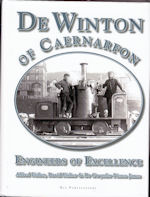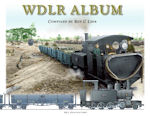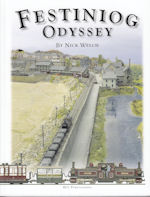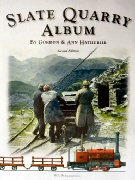De Winton of Caernarfon

Condition: Excellent
Dimensions: Hardback, 273mm x 212mm
Published by: R C Link
Author: Alfred Fisher, David Fisher & Dr Gwynfor Pierce Jones
De Winton of Caernarfon
Engineers of Excellence
Imagine a bustling cosmopolitan port, a centre of travel to much of the globe, with mariners and passengers from all over the world thronging the town and quays. This was the scene at the thriving commercial centre that was Caernarfon some 150 years ago.
With all this vigour and expertise on hand, it was truly the place to be. It is not surprising that it was a centre of expertise and entrepreneurship and that its early engineers and founders were locally bred. So it was that a local Master Mariners' son, Owen Thomas, together with a somewhat dubious partner from Manchester, founded the Union Foundry which quickly achieved success, not only in the Principality, but also by supplying ironwork as far away as the Houses of Parliament in far off London. Into this scene in 1853 came a young English engineer with a French name but Welsh ancestry, one Jeffreys Parry de Winton. With more than a little help from the local aristocracy, he joined Owen Thomas as a partner and brought the Union Foundry to the forefront of engineering excellence in North Wales. His inventive skills were brilliant and his versatility was the magic touch which proved the making of the firm.
This book traces the origins of the Foundry and its rise to success; it tells the tales of the workers and their skills, and of its slow decline echoing that of the native slate industry. Although best known for its popular small vertical boilered quarry locomotives and a magnificent water wheel, the manufacture of quarry equipment, bridges, wagons, stationary engines, and in particular ships and their boilers, was a much more commercially important aspect of their operations, largely overlooked until now, but here covered in two specialised chapters.
The surprising variety of innovative locomotives made by the De Winton works are dealt with in great detail, while a technical chapter analysing their construction, use and performance, is aided by extensivenew drawings, brilliantly illustrating their inventive construction. A chapter on the famous Pen-yr-Orsedd Slate Quarry, where the type last operated in any number, is followed by the fascinating saga of the purchase and eventual restoration of the most famous of the few surviving locomotives.
Hardback, 352 pages, 141 b/w, 114 colour illustrations, 65 drawings, maps & diagrams.
More available.





